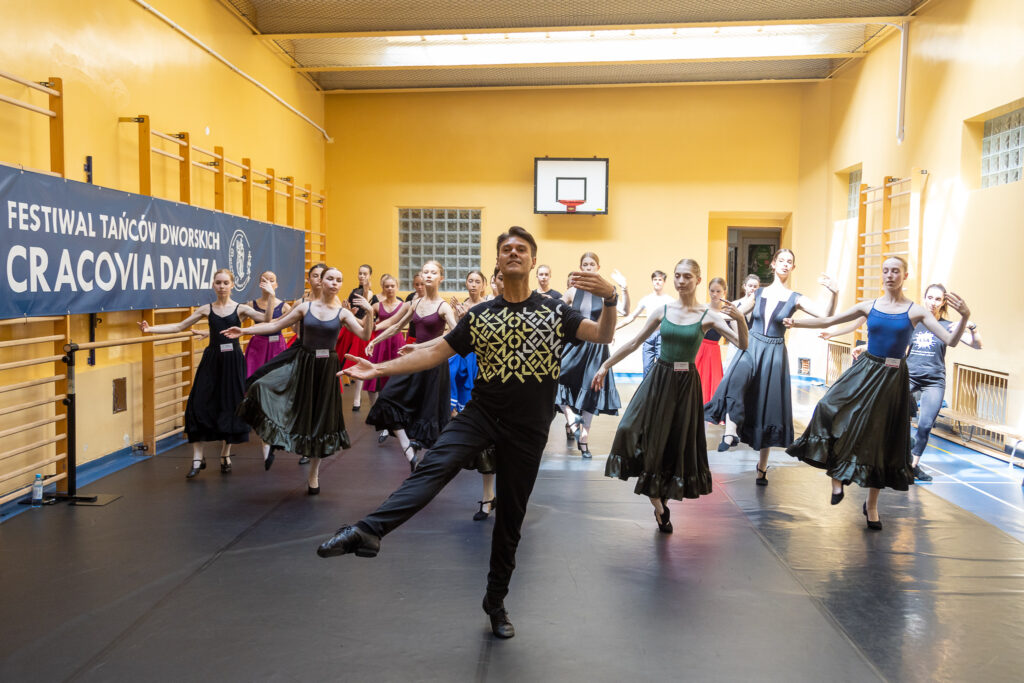Taniec barokowy
Cracovia Danza Festiwal
Kursy - Taniec barokowy

Pierre-François Dollé
W tę trzysetną rocznicę wydania traktatu Pierre’a Rameau „Le Maître à danser” (1725) przyjrzymy się trzem tańcom wymienionym w jego dziele „Abrégé de la nouvelle méthode…”, również opublikowanym w 1725 roku, w którym Rameau dzieli się z nami choreografiami, które uważa za najbardziej dopracowane i odzwierciedlające najlepszy francuski styl.
Obchodzimy tę trzysetną rocznicę, badając jedyną udokumentowaną partyturę choreograficzną, skomponowaną przez samego Pierre’a Rameau, „La Bourrée des Princesses”, przedstawiającą czarujący taniec w stylu wytwornych zabaw (fr. fêtes galantes) w Grand Trianon. Przeanalizujemy również taniec złożony „La Royale”– szlachetną i elegancką sarabandę oraz radosne bourrée. Na koniec zbadamy „Menuet d’Alcide”, menuet o zaskakujących krokach, w duchu menueta balowego z jego obowiązkowymi figurami.
Te trzy tańce, charakterystyczne dla stylu belle dance, stworzonego przez mistrzów tańca Ludwika XIV, pozwolą nam odkryć kilka aspektów tej estetyki, pomiędzy kodyfikacją a teatralnością, pomiędzy elegancją a towarzyską lekkością.
ENGLISH
On this tercentenary of the publication of Pierre Rameau’s treatise „The Dancing Master” (1725), we will explore three dances featured in his „Abridged New Method…” also published in 1725, in which Rameau shares with us choreographies he considers to be the most accomplished, and in the finest French style.
We will celebrate this tercentenary by exploring the only documented choreographic score, composed by Pierre Rameau himself, „La Bourrée des Princesses”, presenting a charming dance in the style of fêtes galantes in the Grand Trianon. We will also explore „La Royale”, a composite dance – a noble and elegant saraband and a joyful bourrée. Finally, we will explore „Alcide’s Menuet,” a minuet with surprising progressions, in the spirit of a ballroom minuet with its obligatory figures.
These three dances, characteristic of the belle dance, a style created by the dance masters of Louis XIV, will allow us to discover several facets of this aesthetic, between codification and theatricality or between elegance and conviviality.
